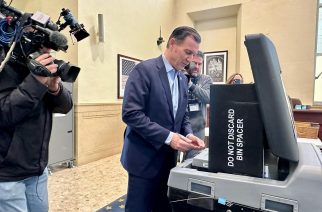
Gov. Cuomo also signs new law to standardize autism spectrum screening for children three and younger
Senate Republicans announced that two bills aimed at helping individuals with autism and other developmental disabilities were signed into law.
Sen. Robert Ortt, R-North Tonawanda, sponsored bill S.8955, which requires the state to comply to guidelines established by the American Academy of Pediatrics for screening autism spectrum disorders (ASD) in children three years old and younger.
This is the first law that standardizes early identification of autism in New York. Screenings are used to detect a disorder before an onset of symptoms. Studies show that early treatment of autism can have significant, positive effects on the health of children and their families.
“Becoming proactive in the identification and treatment of disorders that impact approximately one in 59 children across the U.S. is key to ensuring children identified with ASD receive the best care possible,” Ortt said. “Thanks to this new law, established and consistent screening guidelines will now be in place to make certain that all parents and children, regardless of where they are tested, receive the most effective and beneficial methods that medical providers have to offer.”
The second new law (S.2565-c) was sponsored by Sen. Pamela Helming, R-Canandaigua, and creates a new, voluntary identification card for people with developmental disabilities to improve communication, especially during emergencies and interactions with first responders.
The state Office for People with Developmental Disabilities is authorized to create the optional card under the new.
Each official document provides consistent language, appearance and application standards which will improve the ability of individuals with developmental disabilities across the state to communicate important information about their diagnosis.
An individual’s card can be given to law enforcement or other first responders in emergencies or upon initial interactions.
It lists important information such as potential difficulties with interpersonal communications, physical contact or an inability to verbally respond. The card will also list additional contact information.
“By creating one standardized card, individuals who choose to obtain such a card will have a new tool at their disposal when interacting with law enforcement officers or first responders,” Helming said.
This initiative is paired with funding that will train law enforcement officers and first responders on how to respond to mental health situations









